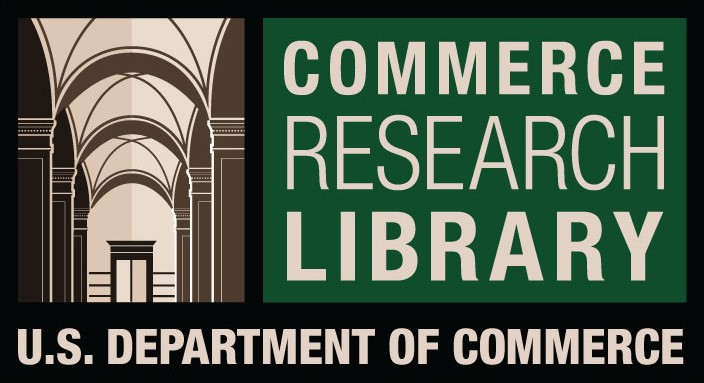RELATIONSHIP BETWEEN CORPORATE SOCIAL PERFORMANCE AND FINANCIAL PERFORMANCE OF PRIVATE SECTOR BANKS IN INDIA
DOI:
https://doi.org/10.61841/d69qsr79Keywords:
Corporate Social Performance and Corporate Financial Performance M14,, G3Abstract
The effects of Corporate Social Performance on the performance of firms, have been brought out by many studies. But this study proposes to examine the relationship between Corporate Social Performance and Corporate Financial Performance of private sector banks in India. The sample for this study consisted of only top 10 private sector banks. Four variables of Corporate Social Performance and four variables of Corporate Financial Performance were used in this study. The study found that there was positive relationship between Corporate Social Performance and Corporate Financial Performance in private banks of India. In other words, the social performance activities could be improved with the help of financial performance of private sector banks in India.
Downloads
References
1. Aguinis, H., Glavas, A. (2012), “What We Know and Don’t Know About Corporate Social Responsibility: A Review and Research Agenda”. Journal of Management, 38, 932–968.
2. Barnard, C.I., (1938). “The Functions of the Executive”. Harvard University Press, Cambridge, MA.
3. Bowen, H.R., Johnson, F.E., (1953). “Social Responsibility of the Businessman”, Ethics and Economics of Society, New York, Harper.
4. Branco, M.C., Rodrigues, L.L. (2006), “Corporate Social Responsibility and Resource-Based Perspectives”. Journal of Business Ethics, 69, 111–132.
5. Carroll, A.B., (1991), “The Pyramid of Corporate Social Responsibility: Toward the Moral Management of Organizational Stakeholders”, Business Horizons, 34 (4), 39-4.
6. Carroll, A.B., Shabana, K.M., (2010). “The Business Case for Corporate Social Responsibility: A Review of Concepts, Research and Practice”. International Journal of Management Review, 12 (1), 85-105.
7. Chien-Ming Chen and Magali Delmas. (2011). “Measuring Corporate Social Performance: An Efficiency Perspective”. Production and Operations Management, 20 (6), 789-804.
8. Chung-Hua Shen, Meng-Wen Wu, Ting-Hsuan Chen, Hao Fang and Hao Fang, (2016), “To Engage or not to Engage in Corporate Social Responsibility: Empirical Evidence from Global Banking Sector”, Economic Modelling, 55,207-225.
9. Cochran, P.L., Wood, R.A., (1984). “Corporate Social Responsibility and Financial Performance”.
Academy of Management Journal, 27 (1), 42-56.
10. Dhamotharan Dhanasekar, Murugesan Selvam and Vadivel Thanikachalam. (2019). “Correlation between Corporate Social Performance and Corporate Financial Performance: Evidence from Indian Companies”. International Journal of Basic and Applied Research, 9 (2), 472-490.
11. Dhanasekar, D., Selvam, M., Amrutha, P., (2019), “Relationship between Corporate Social Performance, Corporate Financial Performance and Financial Risk in Indian Firms”, International Journal of Recent Technology and Engineering, 8 (3S3), 121-128.
12. Dhanasekar, D., Selvam, M., Raja, M., and Gayathri, J., (2020). “The Mediating Effect of Research and Development and Financial Resource on Corporate Social Performance in Asian Countries Companies”. International Journal of Advanced Science and Technology, 29(4s), 1428 - 1437.
13. Doane, D. (2005), “The myth of CSR - The Problem with Assuming that Companies Can do well also Doing Good is that Markets Do Not Really Work That Way”. Stanford Social Innovation Review, 21–29.
14. Du, S.; Bhattacharya, C.; Sen, S. (2011), “Corporate Social Responsibility and Competitive Advantage: Overcoming the Trust Barrier”. Management Science, 57, 1528–1545.
15. Girerd-Potin, I., Jimenez-Garces, S., Louvet, P., (2014). “Which Dimensions of Social Responsibility Concern Financial Investors?”, Journal of Business Ethics, 121 (4), 559-576.
16. Hongdi Wang, Weisheng Lu, Meng Ye, Chau, K.W., Xiaoling Zhang (2016), “The curvilinear relationship between corporate social performance and corporate financial performance: Evidence from the international construction industry”. Journal of Cleaner Production, 137, 1313-1322
17. Hull, C.E.; Rothenberg, S. (2008), “Firm performance: The Interactions of Corporate Social Performance with Innovation and Industry Differentiation”. Strategic Management Journal, 29, 781–789.
18. Igalens, J., Gond, J. (2005). “Measuring Corporate Social Performance in France: A Critical and Empirical Analysis of ARESE Data”. Journal of Business Ethics, 56, 131–148.
19. Kreps, T.J., (1940). “Measurement of the Social Performance of Business. In: An Investigation of Concentration of Economic Power for the Temporary National Economic Committee”, (Monograph No. 7). U.S. Government Printing Office, Washington, DC.
20. Maon, F., Lindgreen, A., Swaen, V. (2009), “Designing and Implementing Corporate Social Responsibility: An Integrative Framework Grounded in Theory and Practice”. Journal of Business and Ethics, 87, 71–89.
21. Margolis, J.D., Walsh, J.P., (2001). “People and Profits?: the Search for a Link between a Company's Social and Financial Performance”. Psychology Press.
22. Marom, I.Y., (2006). “Toward a unified theory of the CSP-CFP link”. Journal of Business Ethics, 67 (2), 191-200.
23. Matten, D., Moon, J., (2008). “Implicit and Explicit CSR: a Conceptual Framework for a Comparative Understanding of Corporate Social Responsibility”. Academy of Management Review, 33 (2), 404-424.
24. McWilliams, A.; Siegel, D. (2000), “Corporate Social Responsibility and Financial Performance: Correlation or Misspecification?.” Strategic Management Journal, 21, 603–609.
25. Mishra, S., Modi, S.B., (2013). “Positive and Negative Corporate Social Responsibility, Financial Leverage, and Idiosyncratic Risk”. Journal of Business Ethics, 117 (2), 431-448.
26. Murray, M., Dainty, A., Murray, M. (Ed.), & Dainty, A. (Ed.) (2008). “Corporate Social Responsibility in the Construction Industry”. Abingdon, UK.
27. Orlitzky, M., Schmidt, F.L., Rynes, S.L., (2003). “Corporate Social and Financial Performance: a Meta- Analysis”. Organisation Studies. 24 (3), 403-441.
28. Post, James E., (1991). “Research in Corporate Social Performance and Policy”, 12. JAI Press, Greenwich, CT.
29. Preston, L.E.; O’Bannon, D.P. (1997), “The Corporate Social-Financial Performance Relationship: A Typology and Analysis”. Business and Society, 36, 419–429.
30. Reimann, B.C., (1975). “Organizational Effectiveness and Management Public Values: A Canonical Analysis”. Academy of Management Journal. 18, 224-241.
31. Van Beurden, P., G€ossling, T., (2008). “The Worth of Values a Literature Review on the Relation between Corporate Social and Financial Performance”. Journal of Business Ethics, 82 (2), 407-424.
32. Wartick, S.L., (1988). “How Issues Management Contributes to Corporate Performance”. Business Forum, 13, 16-22.
33. Wu, M.L., (2006). “Corporate Social Performance, Corporate Financial Performance, and Firm Size: A Meta-Analysis”. Journal of the American Academy of Dermatology, 8 (1), 163-171.
34. Wood, D.J. (1991), “Corporate Social Performance Revisited”. Academy of Management Review, 16, 691–718.
Downloads
Published
Issue
Section
License

This work is licensed under a Creative Commons Attribution 4.0 International License.
You are free to:
- Share — copy and redistribute the material in any medium or format for any purpose, even commercially.
- Adapt — remix, transform, and build upon the material for any purpose, even commercially.
- The licensor cannot revoke these freedoms as long as you follow the license terms.
Under the following terms:
- Attribution — You must give appropriate credit , provide a link to the license, and indicate if changes were made . You may do so in any reasonable manner, but not in any way that suggests the licensor endorses you or your use.
- No additional restrictions — You may not apply legal terms or technological measures that legally restrict others from doing anything the license permits.
Notices:
You do not have to comply with the license for elements of the material in the public domain or where your use is permitted by an applicable exception or limitation .
No warranties are given. The license may not give you all of the permissions necessary for your intended use. For example, other rights such as publicity, privacy, or moral rights may limit how you use the material.









